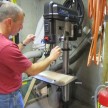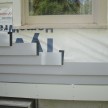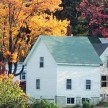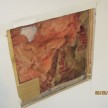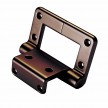Repairing Mortar Joints
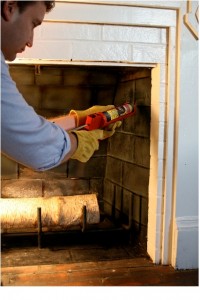 Protect your home by making minor mortar repairs
Protect your home by making minor mortar repairs
With colder temperatures here, now is the time to check your home for deteriorating mortar joints and loose mortar – and make any minor repairs before they turn into major headaches.
Freezing rain, ice, snow and deicers, as well as freeze/thaw temperature cycles have the potential to cause costly damage. Left unrepaired, water can seep in between cracked, loose mortar and cause interior wall damage.
Minor cosmetic repairs to mortar can be made on any type of brick walls – including garden walls, a home’s exterior brick and chimneys. And making such repairs is easier than many homeowners realize – all you need is a caulk gun and the right repair material.
A sanded acrylic mortar repair caulk – such as Quikrete Mortar Repair – will give the appearance of mortar in texture and color and is a more easily undertaken project for homeowners who are nervous about mixing mortar. The caulk’s sanded acrylic formula adheres to brick, block, stone and concrete surfaces, and the caulk tube’s square applicator tip is designed to smooth mortar joints during application of the caulk.
Before applying, make sure joints are clean, dry and free of grease, dust or loose particles, and remove all loose mortar from the joint. Apply the caulk 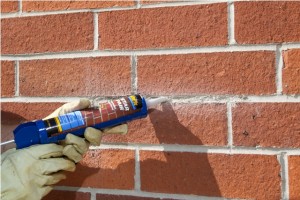 by pushing the cartridge tip over the surface and forcing a bead of caulking into the opening. Do not apply any thicker than 3/8 inch in one application. Excess caulk can be wiped off with a damp cloth.
by pushing the cartridge tip over the surface and forcing a bead of caulking into the opening. Do not apply any thicker than 3/8 inch in one application. Excess caulk can be wiped off with a damp cloth.
For homeowners looking to repair cracks in their fireplace, there is a specially designed mortar that is ideal for repairing damage commonly found in fireboxes. Quikrete Fireplace Mortar is a silicate-based refractory cement caulk ideal for tuck pointing damaged firebox mortar joints and repairing chips, cracks and breaks in fire brick commonly found in fireplaces and wood burning stoves. Once cured, the mortar provides superior adhesion for a durable repair while withstanding temperatures up to 2,000 F.
Using a caulk gun, the mortar is applied in strips no greater than 1/8-inch with multiple 1/8-inch layers for larger joints as needed. Once dry, start a low fire, keeping the temperature below 212 F until the mortar is dried thoroughly. It will typically take one to four hours to assure adequate drying and set time. Afterwards, increase the firebox temperature to 500 F for an additional one to four hours before routine usage.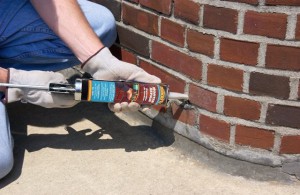
As the weather changes, your house is more vulnerable to damage than ever. By taking these small steps that don’t require anything more than a caulking gun and about $5 per tube of caulk, homeowners can save significant money later by avoiding the need to make major repairs.



